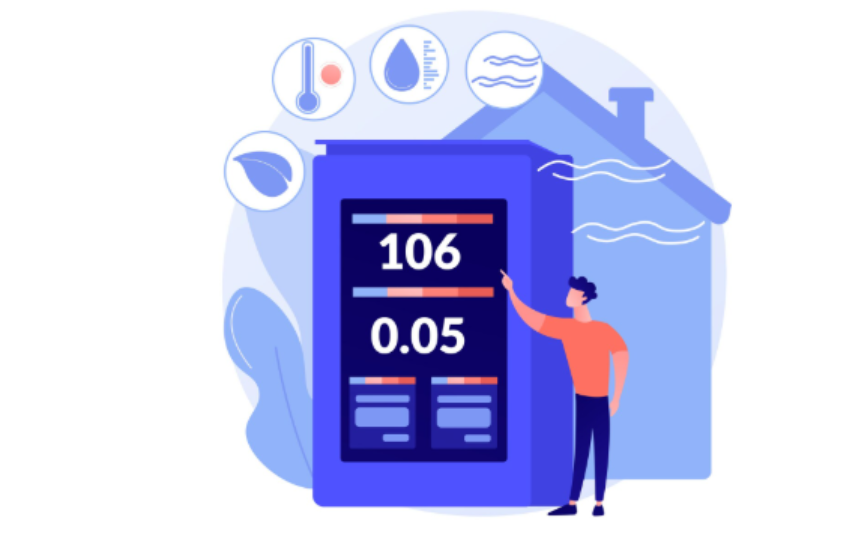For many households and businesses across the United Kingdom, heating oil remains a trusted and efficient source of energy—especially in rural areas where access to the gas grid is limited. Yet, for many homeowners, the technical jargon around heating oil can be confusing. Terms like “28-second oil” or “35-second oil” often pop up when ordering fuel, but what do they actually mean?
This guide dives deep into heating oil grades—their differences, uses, and benefits—so you can make an informed decision and ensure your heating system runs at peak performance.
1. What Are Heating Oil Grades?
Heating oil grades refer to different types of fuels classified by their viscosity—essentially, how thick or thin the oil is when it flows. The “seconds” rating (28 sec or 35 sec) comes from the time it takes for a standard amount of the oil to flow through a specific nozzle in a laboratory test.
-
The lower the number (e.g., 28 seconds) → the thinner and lighter the oil.
-
The higher the number (e.g., 35 seconds) → the thicker and heavier the oil.
This difference in thickness directly affects how the oil behaves in a heating system, how cleanly it burns, and what kind of equipment it’s best suited for.
2. 28-Second Heating Oil (Kerosene)
a. What It Is
28-second oil, commonly known as kerosene or paraffin, is the most widely used heating oil in domestic UK properties. It’s a lighter distillate fuel, refined to burn cleanly and efficiently in home heating systems.
b. Typical Applications
-
Domestic boilers in residential homes
-
Range cookers like AGA or Rayburn
-
Some portable or space heaters
c. Key Benefits of 28-Second Oil
-
Cleaner burning: Produces less soot and fewer deposits, which means your boiler requires less frequent servicing.
-
Higher efficiency: Because of its low viscosity, it atomises well, ensuring a more complete combustion process.
-
Less odour: Kerosene has a more refined smell compared to heavier oils.
-
Long shelf life: When stored correctly, it can remain stable for 18–24 months.
d. Suitability
If you’re heating a typical UK home with a modern pressure jet boiler, 28-second oil is likely what you’re already using—or what you should be using for optimal performance.
3. 35-Second Heating Oil (Gas Oil or Red Diesel)
a. What It Is
35-second oil is also known as gas oil or red diesel (due to its dyed appearance for tax differentiation). It’s a heavier distillate with a slower flow rate and is less refined than kerosene.
b. Typical Applications
-
Commercial and agricultural heating systems
-
Industrial boilers and machinery
-
Older domestic boilers designed to handle heavier oils
-
Generators and some off-road vehicles
c. Key Benefits of 35-Second Oil
-
Cost-effective in bulk: For large-scale users, it can be more economical per litre.
-
Ideal for heavy-duty equipment: It provides consistent energy output for machinery and industrial boilers.
-
Durability: Suited for systems that can handle its higher viscosity and combustion characteristics.
d. Suitability
This oil is better for business premises, farms, or industrial facilities rather than typical homes. However, some older domestic boilers can run on gas oil, especially in remote rural areas.
4. Key Differences Between 28-Second and 35-Second Oils
| Feature | 28-Second Oil (Kerosene) | 35-Second Oil (Gas Oil) |
|---|---|---|
| Viscosity | Thinner, lighter | Thicker, heavier |
| Typical Use | Domestic boilers, cookers | Commercial, agricultural, industrial |
| Combustion | Cleaner, more efficient | Produces more soot, less efficient |
| Storage Stability | Long shelf life | Slightly less stable |
| Price | Slightly higher per litre | Often cheaper in bulk |
| Odour | Minimal | Stronger smell |
| Boiler Compatibility | Modern condensing/non-condensing | Older or commercial boilers |
This table clearly shows why most UK homes prefer 28-second kerosene, while 35-second gas oil remains the go-to choice for farms, construction sites, and factories.
5. Why the “Seconds” Rating Matters
Many people assume all heating oil is the same. In reality, choosing the wrong grade can lead to:
-
Poor burner performance
-
Increased soot and sludge build-up
-
Higher maintenance costs
-
Reduced boiler lifespan
-
Unnecessary fuel wastage
The seconds rating determines how easily the oil atomises through the burner’s nozzle. A thinner oil (28 sec) vaporises more efficiently, making it ideal for compact domestic systems, while thicker oil (35 sec) requires equipment designed to handle it.
6. Premium Kerosene — A Modern Upgrade
In recent years, premium 28-second kerosene has become increasingly popular in the UK. This is essentially standard kerosene enhanced with additives that improve performance.
Benefits of Premium Kerosene:
-
Cleaner burn: Reduces carbon build-up and emissions.
-
Better cold flow: Prevents gelling in winter months.
-
Reduced sludge: Keeps tanks cleaner for longer.
-
Improved boiler efficiency: Can lower annual heating costs.
While it costs slightly more per litre, many homeowners find the long-term savings in servicing and efficiency outweigh the upfront cost.
7. Proper Storage of Heating Oil
No matter which grade you choose, storage quality has a big impact on performance. A poorly maintained tank can lead to contamination, sludge formation, or water ingress—all of which can damage your heating system.
Storage Tips:
-
Use a bunded tank if possible to reduce spill risk.
-
Keep the tank clean and covered to prevent debris entering.
-
Check regularly for leaks, cracks, or rust.
-
Order oil before winter to avoid last-minute shortages.
-
Consider adding tank treatment additives to keep fuel stable.
A well-maintained tank ensures your oil—whether 28- or 35-second—delivers reliable performance throughout the heating season.
8. Environmental Considerations
The UK is steadily moving towards cleaner energy, but heating oil still plays a vital role in off-grid areas. Modern kerosene and gas oil are far more efficient than they were decades ago, and premium kerosene can significantly reduce carbon emissions.
Additionally, regular servicing of your boiler can lower fuel usage and emissions, making your system more environmentally friendly. Many suppliers also offer bio-heating oil blends, which reduce the carbon footprint even further.
9. Legal and Tax Differences
In the UK, 28-second kerosene is not dyed and is intended primarily for domestic heating. 35-second gas oil is dyed red to distinguish it from regular diesel and is subject to different tax rules. Using gas oil unlawfully (e.g., in on-road vehicles) is a serious offence with heavy penalties.
Always ensure your fuel type matches your legal use case and your equipment’s specification.
10. Choosing the Right Heating Oil Grade
Here’s a quick decision guide:
-
Modern home with a pressure jet boiler → 28-second kerosene (standard or premium).
-
Farm, factory, or commercial premises → 35-second gas oil.
-
Older home with legacy equipment → Check manufacturer’s recommendations (some may use gas oil).
-
Cold rural area → Premium kerosene to prevent winter flow issues.
When in doubt, speak to your boiler service engineer or fuel supplier before switching oil types. Using the wrong grade can affect burner performance and may void warranties.
11. Regular Servicing Maximises Oil Efficiency
The grade of heating oil is only one part of the efficiency equation. Annual servicing is equally crucial. A well-maintained boiler:
-
Uses less oil
-
Emits fewer pollutants
-
Reduces risk of breakdowns
-
Extends the life of your heating system
Servicing should include nozzle replacement, filter cleaning, tank checks, and combustion efficiency testing.
12. The Future of Heating Oil in the UK
The UK heating landscape is evolving. Government initiatives are encouraging a shift towards renewable heating sources like heat pumps and biofuels. But for many off-grid households, heating oil will remain essential for years to come.
We’re also seeing the emergence of Hydrotreated Vegetable Oil (HVO) as a low-carbon alternative. HVO can replace traditional kerosene in some systems with minor modifications, offering up to 90% carbon reduction compared to fossil fuels.
Conclusion
Understanding heating oil grades isn’t just technical jargon—it’s essential knowledge that can help UK homeowners and businesses save money, improve efficiency, and protect their equipment.
-
28-second kerosene: Best for modern domestic heating.
-
35-second gas oil: Ideal for agricultural, industrial, or legacy systems.
-
Premium kerosene: A smart upgrade for cleaner, longer-lasting performance.
By choosing the right grade, storing it properly, and maintaining your heating system, you can enjoy reliable, cost-effective warmth throughout the coldest UK winters.



